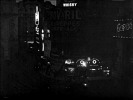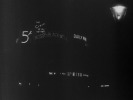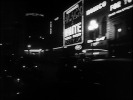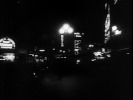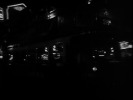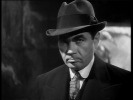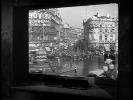Piccadilly Circus, London
Piccadilly Circus is a road junction and public space of London's West End in the City of Westminster, built in 1819 to connect Regent Street with the major shopping street of Piccadilly.
Its status as a major traffic intersection has made Piccadilly Circus a busy meeting place and a tourist attraction in its own right. The Circus is particularly known for its video display and neon signs mounted on the corner building on the northern side, as well as the Shaftesbury memorial fountain and statue of Eros
Hitchcock's Films
The Lodger: A Story of the London Fog (1927)
At the start of The Lodger, a crowd in Piccadilly Circus reads about the latest Avenger murder on the Circus' electric signs.[1]
Downhill (1927)
To show Roddy's return to London at the end of Downhill, Hitchcock included a shot of the neon lights of Piccadilly Circus.
Rich and Strange (1931)
To symbolise Fred and Emily's returned to England at the end of the film, Hitchcock includes a shot of the neon signs of Piccadilly Circus.
The 39 Steps (1935)
To signify Richard Hannay and Pamela's return to London at the finale of The 39 Steps, Hitchcock includes a shot of the neon signs of Piccadilly Circus, including the Café Monico sign.
Sabotage (1936)
At the start of the film, after the act of sabotage Battersea Power Station, Hitchcock shows the status of Eros in the darkness.
Later in Sabotage, as Verloc's meeting with Vladimir at London Zoo concludes, Verloc imagines his bomb exploding in Piccadilly Circus.[2]
According to the newspaper reports in the film, Stevie's final bus journey ends with the bomb exploding near Piccadilly Circus, although the actual traffic jam scenes were filmed at St. Giles Circus. The bus wreckage scenes were filmed at Welwyn Studios. Verloc had planned to Stevie to leave the bomb at the London Underground station at Piccadilly Circus.[3]
Google Maps
Nearest Locations
loading...Links
Notes & References
- ↑ Alfred Hitchcock's London: A Reference Guide to Locations (2009) by Gary Giblin, pages 149-50
- ↑ Alfred Hitchcock's London: A Reference Guide to Locations (2009) by Gary Giblin, pages 150-51 and 194-95
- ↑ Alfred Hitchcock's London: A Reference Guide to Locations (2009) by Gary Giblin, pages 165-66



